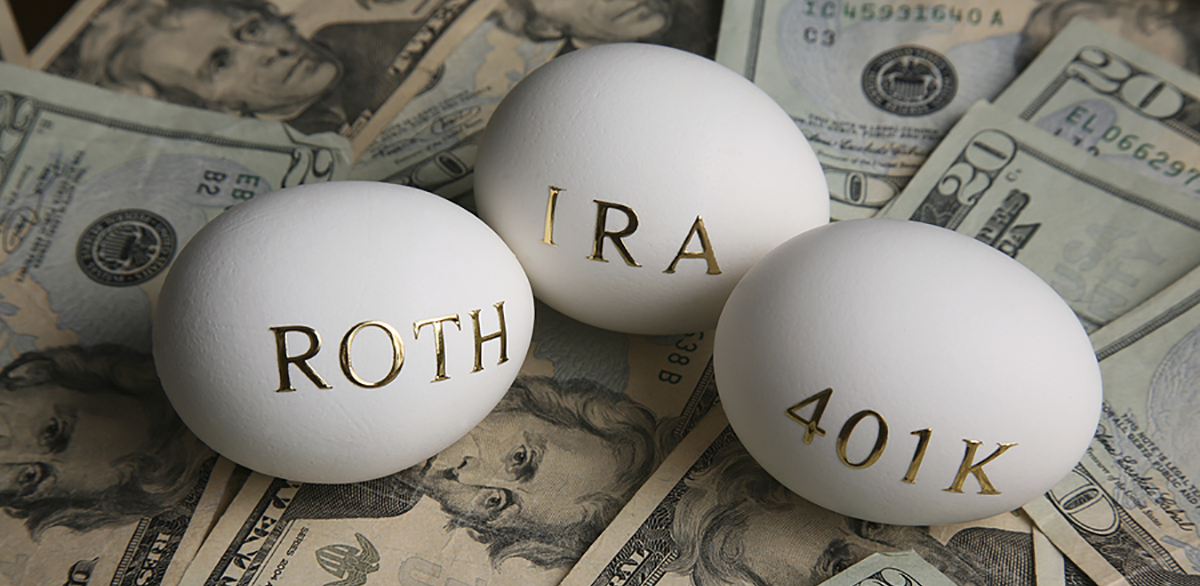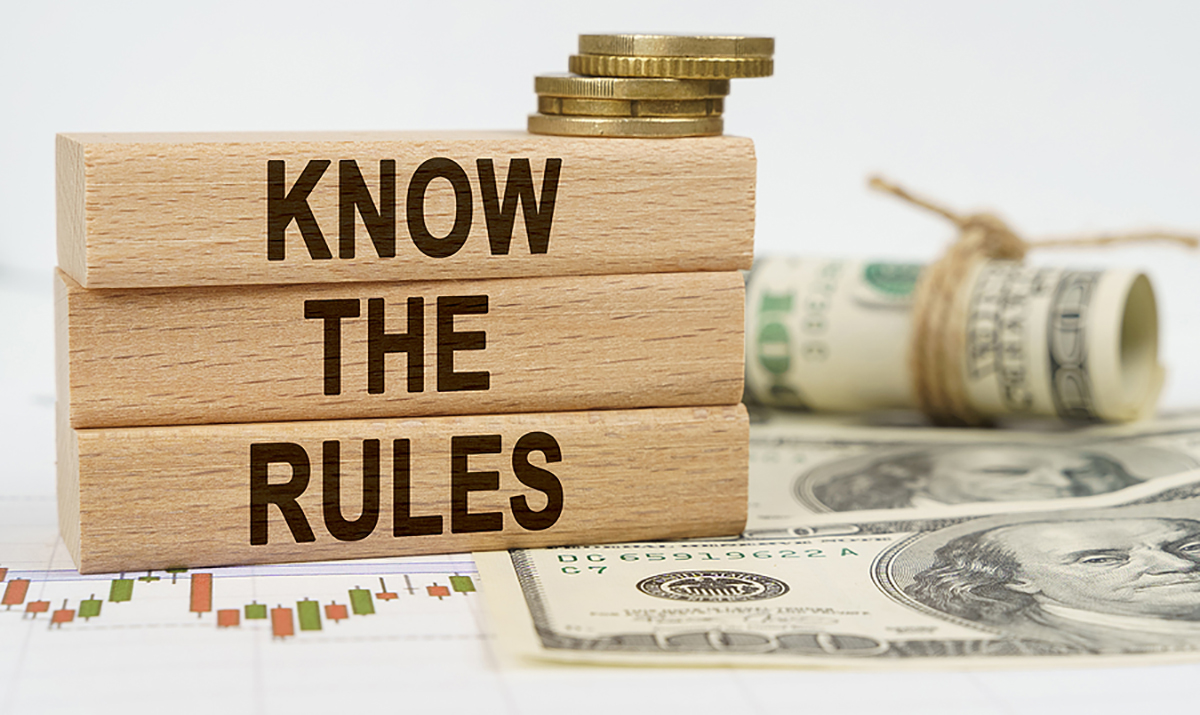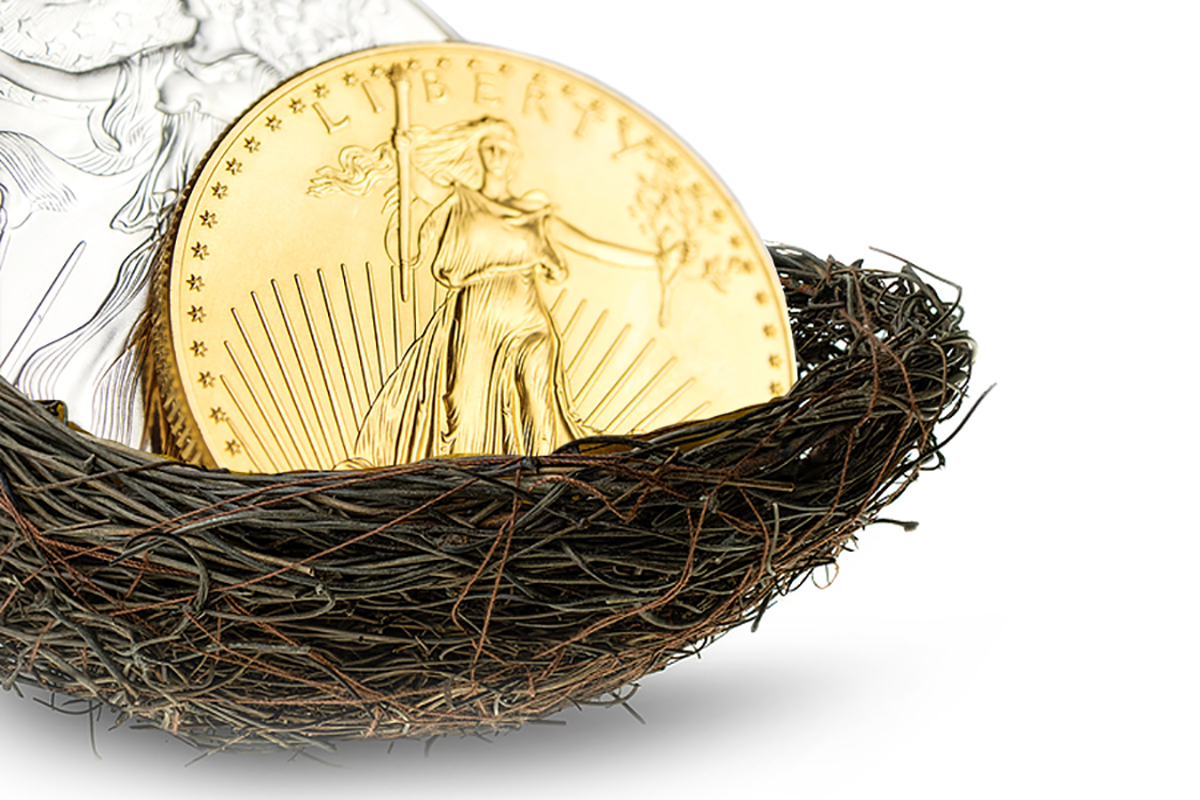
Myth: You can’t continue to contribute to your IRA after 70 ½.
Truth: That’s wrong! Or at least it has been since 2020.
On December 20, 2019, former President Donald Trump signed the SECURE Act into law, effectively removing age restrictions for traditional IRA contributions.
Before the bill passed, older taxpayers who were still working were only allowed to contribute to a traditional IRA up until the year they reached 70 ½. As the final cutoff period, individuals beyond this age weren’t legally permitted to place more money into their traditional IRA accounts [1]
However, much has changed since the law passed: national debt has soared to nearly $28 trillion, the dollar’s weakened, and the threat of inflation looms on the horizon. You may want to consider taking steps to preserve your savings, so you can reap the full benefit of continuing contributions.
See more about how the law and investing ecosystem have changed (and what you can do to protect your wealth) in this article.
DISCLAIMER: Scottsdale Bullion & Coin does not provide tax, legal or accounting advice. This article was created for informational purposes only. This article is not intended to provide, and should not be relied on for tax, legal or accounting advice. Please consult your own tax, legal and accounting advisors before performing any transactions.
What Did the SECURE Act Change?
Now, seasoned taxpayers are free to contribute to a traditional IRA. With no age limit in place, individuals over the age of 70½ who still work or run a business can make ongoing contributions for as long as they work [2] Taxpayers can take advantage of this new law by making contributions for the 2020 tax year and beyond no matter their age.
It’s important to note that the passing of the SECURE Act didn’t change Roth IRA contributions. There’s no age limit on when taxpayers are able to put money into these accounts. The law only impacts traditional IRA contributions. Taxpayers should also note that contributions cannot be made to a traditional or Roth IRA by individuals who aren’t working, no matter their age.
Here’s the complete breakdown of rules, contribution amounts, and insider tips for protecting your IRA from inflation and market uncertainty after age 70½.
The Rules for IRA Contributions after 70½

When you hit the age of 72, your taxable income increases significantly because you’re required by law to take minimum distributions from your traditional IRA and employer-sponsored retirement accounts [3]
What Is a Required Minimum Distribution (RMD)?
Required minimum distributions are certain amounts of money that individuals are required by law to withdraw each year from their traditional IRA or employer-sponsored accounts.
When must you take RMDs? At the age of 72. That ups the age from 70½, following the passage of the SECURE Act. Depending on your type of retirement account, RMDs kick-in whether you’re retired or still working.
The big drawback of RMDs? You’ll be exposed to higher taxes because each RMD is considered taxable income. Growing your retirement savings gets harder.
The good news is, there are still some viable strategies to increase and secure your nest egg. Because, when it comes to securing your financial future, you have options. See more about them and the pros and cons of each one below.
The Rules for IRA Rollovers and Transfers after 70½
You’ve probably come across the terms transfer and rollover. Although they’re often used interchangeably, these words refer to different transactions [4]
In short, a transfer is when you move funds directly from one retirement account to another. For example: from a traditional IRA to a precious metals IRA. Let’s say you have a traditional IRA. Then you set up another IRA at a company that offers precious metals. Finally, you have a check made out on your behalf from the traditional IRA to the precious metals IRA. That would be a direct transfer.
A rollover, on the other hand, occurs when you take a distribution from your traditional IRA or 401k and then write a check for that amount to the company handling your precious metals IRA within 60 days. If you have your distribution check written to the company in charge of your precious metals IRA—instead of to yourself—then that would be considered a direct rollover.
What Is a Precious Metals IRA?
A precious metals IRA is a type of self-directed IRA. It’s really just like a traditional, Roth, or SEP IRA. The only difference? The company handling it offers precious metals, allowing you to invest in physical assets, such as gold or silver, instead of paper assets like stocks or bonds.
What’s the benefit of keeping some gold and silver in your retirement account? These assets are considered the ultimate safe haven from stock market volatility, inflation, and economic downturn—essentially, from the market realities eroding your savings right now.
Gold can have an inverse relationship to stocks and the dollar, so when the equities in your IRA lose value, the gold may gain value. The diversification a gold IRA offers can help you not only grow but also protect your wealth.
You can enjoy more control over where you put your money and your exposure to risk with a self-directed precious metals IRA. Learn more about How a Precious Metals IRA Works.
Other Types of Self-Directed IRAs
Another example of a rollover is taking retirement funds in an employer’s plan and directing them to the real estate market. By transferring funds directly from a 401(k) into a self-directed IRA, you can start investing in real estate.
Working Investors Can Make IRA Contributions after 70 ½. Here Are Their Options
Working investors have a variety of options when it comes to making IRA contributions past the age of 70½. We’ll explore some of the more popular options along with the advantages and downsides of each.
Roth IRA
You’ve always been allowed to make contributions to a Roth IRA after turning 70½. Another advantage of Roth IRAs is that there’s no age limit on making a conversion, or the transfer of savings from one type of retirement fund to a Roth account [5],[6] However, direct Roth IRA contributions open you up to income limitations [7]
Roth IRA Contribution Limit for 2021
$7,000 for investors aged 50 or older [8]
401(k)
If you’re still working, you can continue to make contributions to your employer-sponsored 401(k) retirement plan, while avoiding the RMDs to which other accounts make you vulnerable. Keep in mind that a 401(k) might limit your investment options [9]
401(k) Contribution Limit for 2021
$26,000 for those aged 50 years old or older [10]
403(b)
A 403(b) is essentially a 401(k) offered to employees of state agencies, nonprofits, and similar institutions [11] If you’re still employed at the company offering the 403(b) retirement plan, you can avoid RMDs [12] However, this type of account also limits the amount of diversity you can achieve.
403(b) Contribution Limit for 2021
$26,000 for those aged 50 years old or older [13]
SEP-IRA
While you can continue to make contributions to your SEP-IRA after turning 70½ if you’re still employed, you will be subject to RMDs no matter your working status [14]
SEP-IRA Contribution Limit for 2021
$64,500 for investors aged 50 or older [15]
HSA
A health savings account (HSA) allows you to avoid paying taxes on earnings, invest pre-tax income, and withdraw funds tax-free. The downside is that, even after the age of 65, you’ll be subject to a hefty penalty for non-medical expenses [16]
HSA Contribution Limit for 2021
$4,600 if you’re 50 years old or older [17]
Precious Metals IRA
If you’re investing in a precious metals IRA, your retirement savings are better insulated from the instability of the market. Furthermore, as it’s a self-directed retirement account, you’ll have more control over your level of risk.
Precious Metals IRA Contribution Limit for 2021
If you’re aged 50 or older, you can contribute up to $7,000 [18]
The Best Way to Protect Your Retirement Savings from Market Risk in Your Later Years

Protecting your nest egg isn’t just about keeping Uncle Sam’s clutch at bay or making sure it grows over time.
It’s wise to consider the inherent risk of your investments. The Fed’s printing trillions of dollars to stimulate the economy and prop up the stock market and the dollar RIGHT NOW. What will be the cost of runaway debt when we reach the end game of the Fed’s grand experiment? To the dollar? To the markets? To the economy? Most importantly, to your retirement savings?
As we are floating at all-time highs in the stock market, some investors are beginning to remember some of the wounds they received in the financial crisis of 2007-2008, where they saw their accounts get sliced in half and still paid advisors their traditional commissions. This has led some to look at ways to get a little more hands-on with their qualified investments,–explains Joseph Polakovic, the CEO and owner of Castle West Financial.
Having a self-directed precious metals IRA is a great option for savvy investors who want to cement their retirement savings with tangible assets.
Are you one such investor? See how to get started with a precious metals IRA today. Call 1-888-812-9892 to speak with a Scottsdale Bullion & Coin precious metals advisor now.

